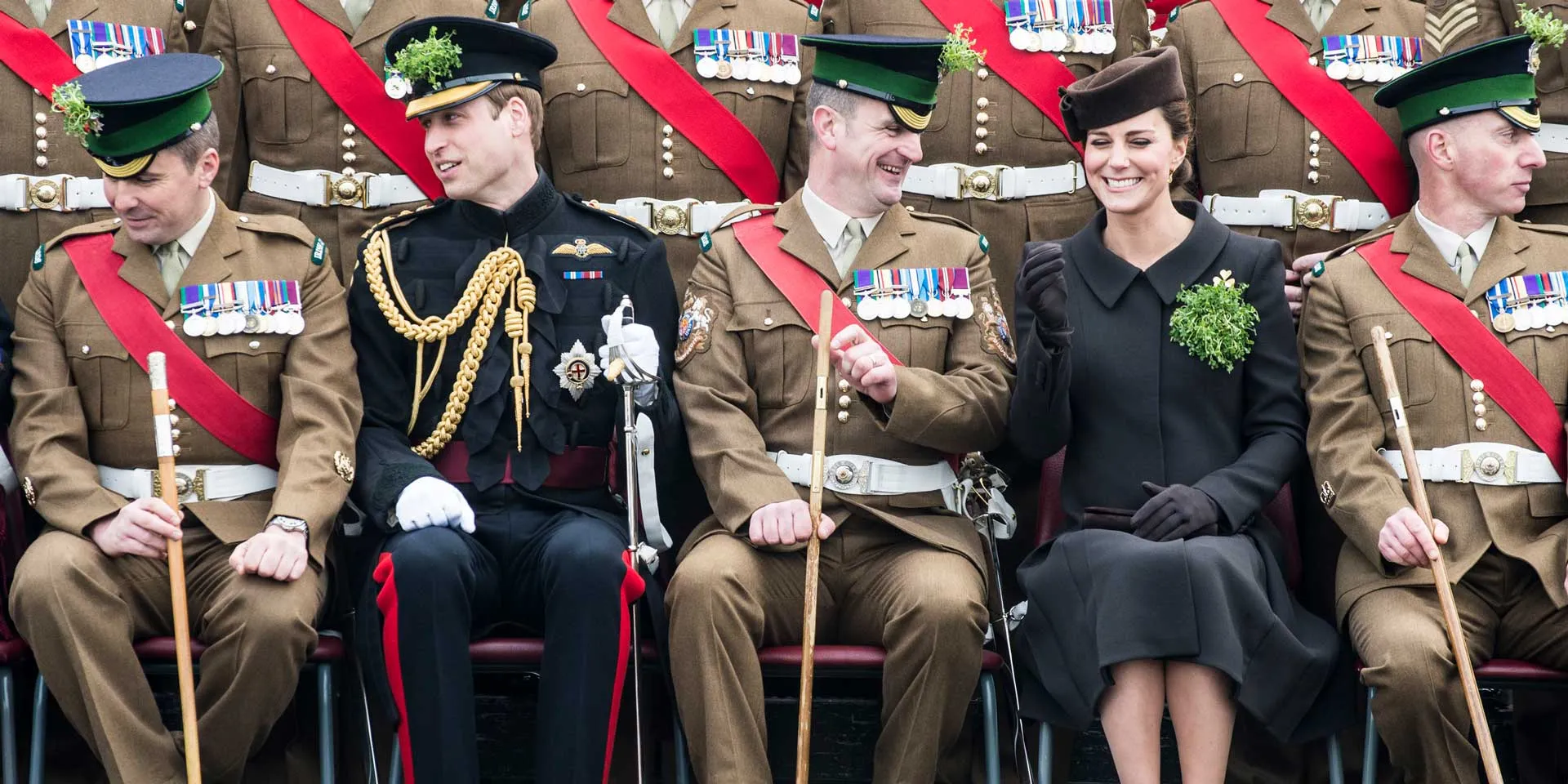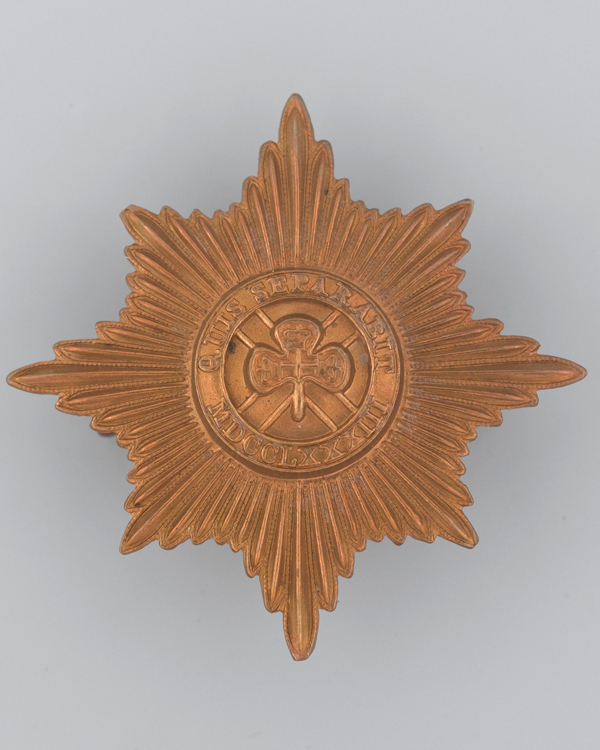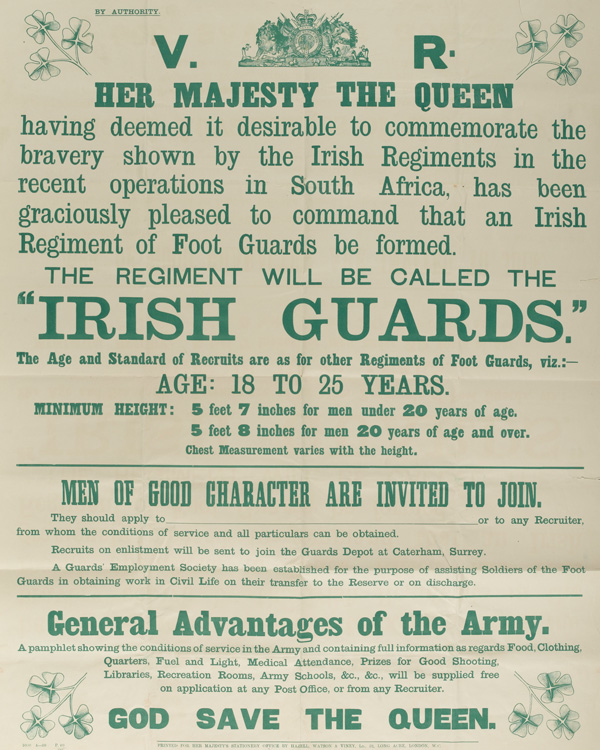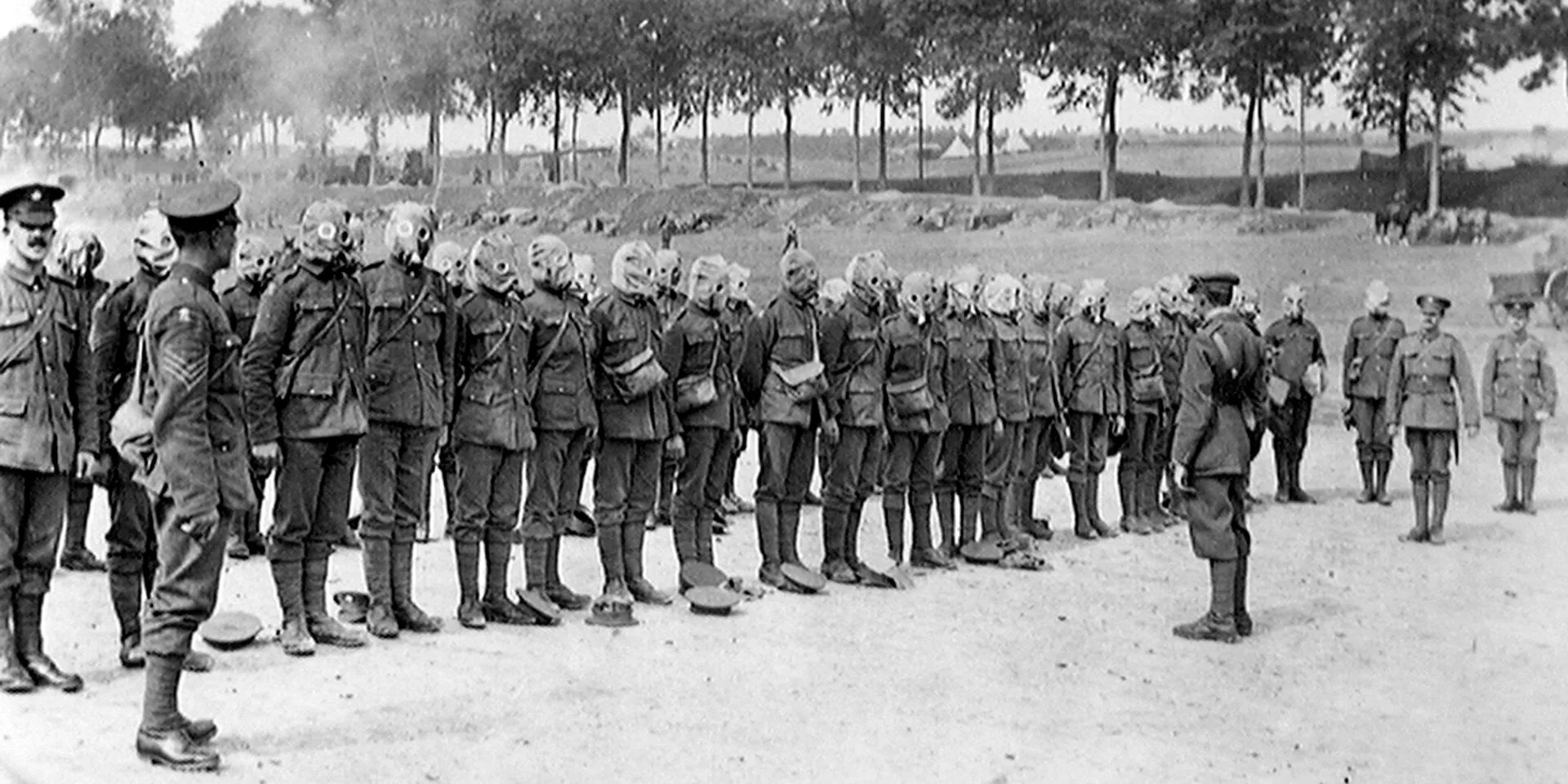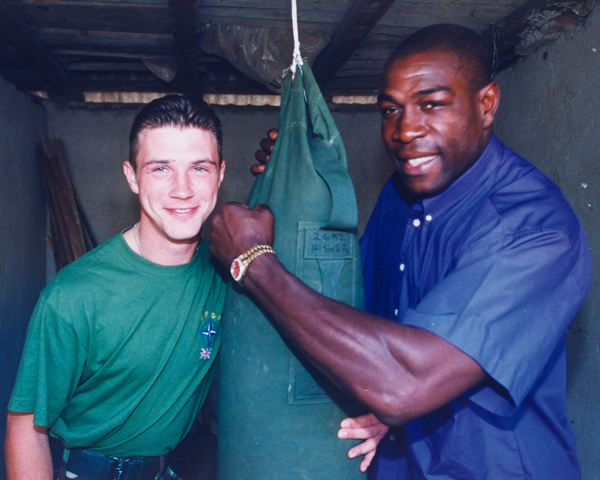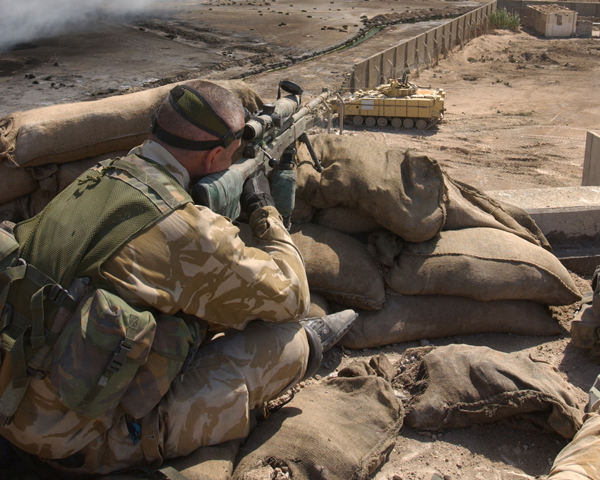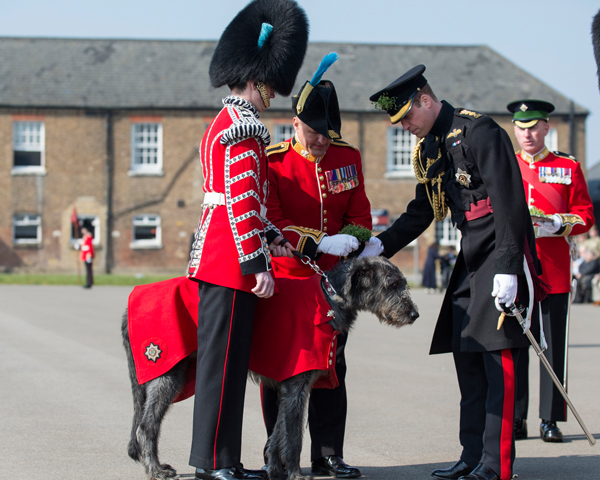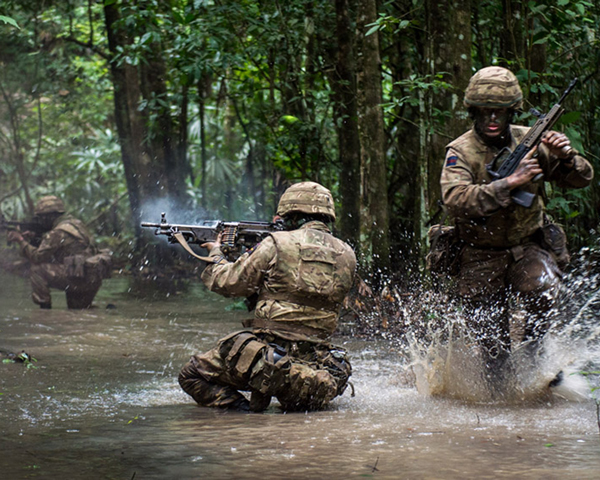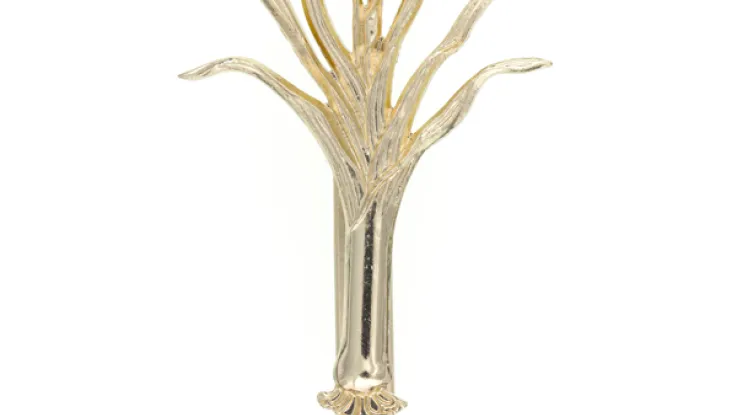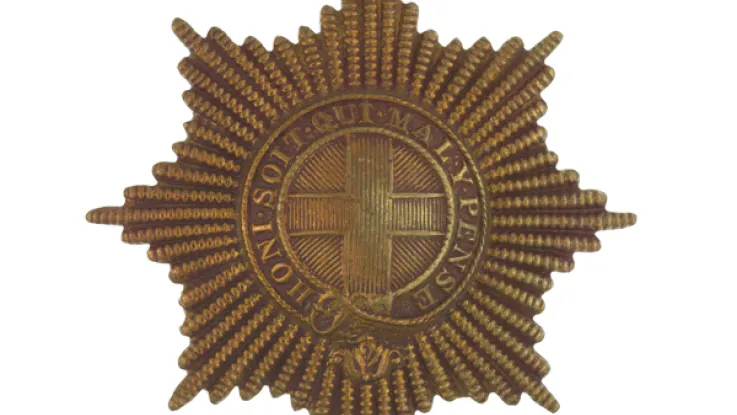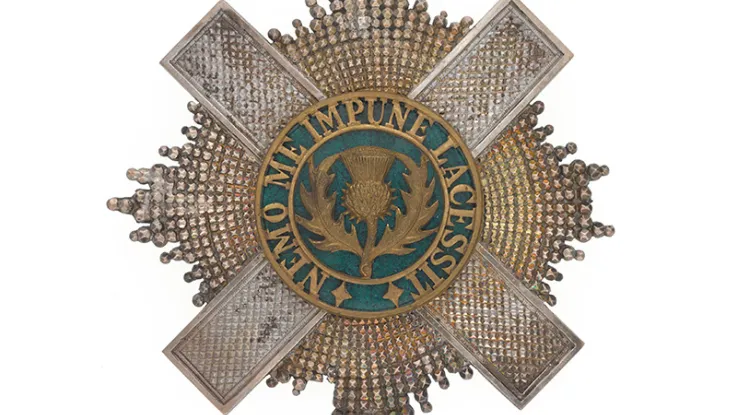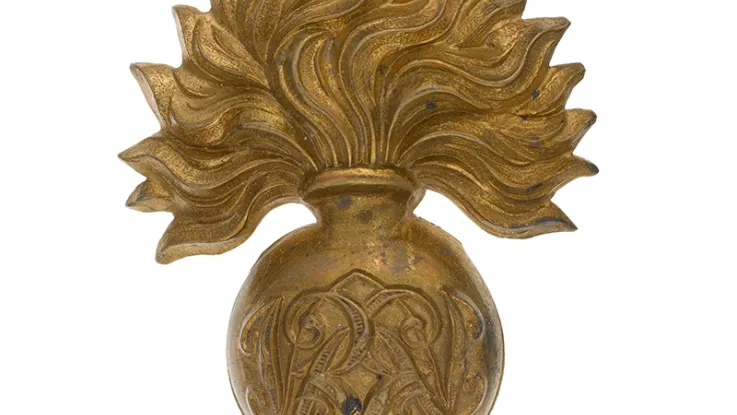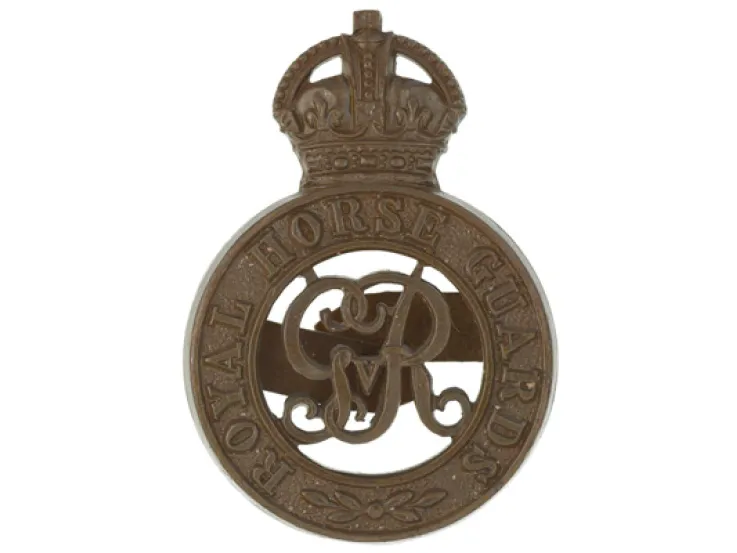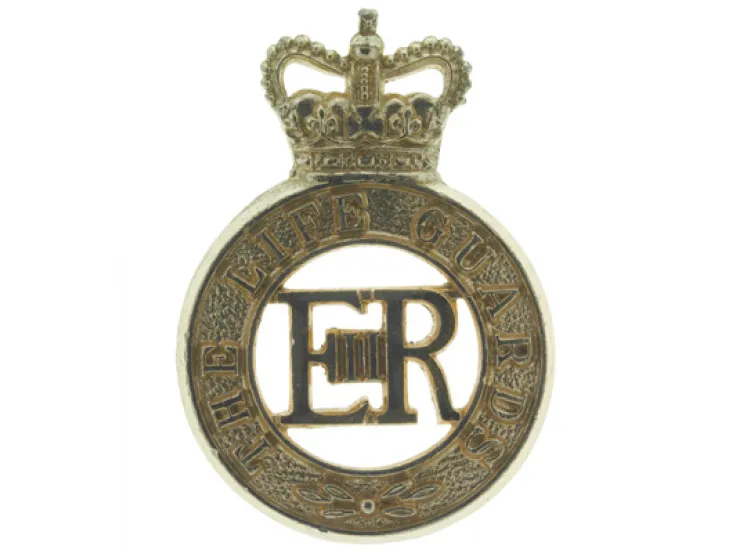Origins
The Irish Guards was raised by order of Queen Victoria in April 1900 in response to acts of gallantry by Irish units during the Boer War (1899-1902). The regiment was presented with its first Colours in May 1902 by King Edward VII.
The first recruits were men of Irish descent from existing regiments of the British Army. It went on to recruit from across Britain and Ireland.
First World War
The unit was stationed at home on ceremonial duties until the outbreak of the First World War (1914-18). Its 1st Battalion deployed to France eight days after the declaration of war in August 1914. It was joined there in September 1915 by the recently-raised 2nd Battalion (which was disbanded in 1919).
During its service on the Western Front, the regiment won four Victoria Crosses (VC) and fought in many battles including Mons (1914), First Ypres (1914), Festubert (1915), Loos (1915), Somme (1916), Passchendaele (1917), Cambrai (1917), the German Spring Offensive (1918) and the Sambre (1914).
One of its wartime officers was John Kipling, son of Rudyard Kipling. Despite initially being rejected because of his poor eyesight, John was allowed to join up after his father intervened. In September 1915, John was killed at Loos and his body was never found.
Inter-war years
In 1919-20, the unit was caught up in the troubles over the partition and independence of Ireland. Some of its personnel were accused of supplying weapons and equipment to Irish Republican forces.
During the rest of the inter-war years, the regiment deployed to Turkey, Gibraltar, Egypt and Palestine.
Second World War
In 1940, 1st Battalion fought in the Norway campaign. 2nd Battalion (raised in 1939) served in Holland, where it helped evacuate the Dutch Royal Family before joining the retreat to Dunkirk.
In March 1943, 1st Battalion joined the final stages of the North African campaign, fighting in Tunisia. It subsequently deployed to Italy in December of that year. The battalion took part in the Anzio landings (1944) and then fought its way up the Italian peninsula for the rest of the war.
in June 1944, the 2nd and 3rd Irish Guards (raised in 1941) landed in Normandy. They went on to fight at Caen (1944), before joining the advance into Belgium and Holland. In September 1944, both battalions joined 30 Corps’ advance to relieve the airborne troops at Arnhem. It then fought its way into Germany.
Post-war
After the war, the regiment was reduced to a single battalion. In 1947, the 1st Irish Guards deployed to the Palestine Mandate on security duties. It then moved to the Suez Canal Zone in Egypt, remaining there until the British withdrawal in 1956. The regiment also served in Cyprus and Aden during the late 1950s and 1960s.
During the 1970s and 1980s, it was regularly part of the British Army of the Rhine in West Germany. The Irish Guards also served as the garrison of Hong Kong and Belize during this period.
Exempt from Northern Irish service for much of ‘the Troubles’, it undertook its first operational tour there in 1992. It then joined the Nato-led peacekeeping force in Kosovo in 1999.
Recent years
In 2003, the Irish Guards took part in the invasion of Iraq (2003-11), operating in the Basra area. It returned to that country in 2006-07.
In 2010, the regiment deployed to Afghanistan (2001-14), and a single company returned there in 2013. The entire regiment was stationed in Cyprus in 2014, while a company garrisoned the Falkland Islands in 2017-18.
Regimental museums
The National Army Museum works with a network of Regimental and Corps Museums across the UK to help preserve and share the history and traditions of the Army and its soldiers.
Discover more about The Irish Guards by visiting The Guards Museum in London.

